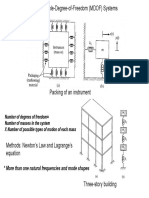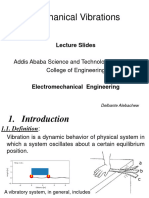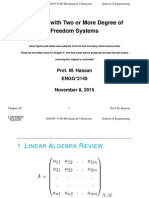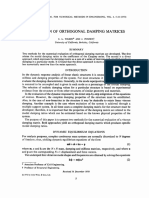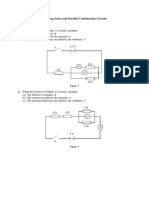0% found this document useful (0 votes)
4 views30 pagesMe561 Dynamics Lecture 5
The document discusses dynamics in mechanical engineering, focusing on two-degree of freedom systems and forced systems with viscous damping. It includes equations of motion, eigenvalue problems, and a numerical example involving a damped two-degree-of-freedom system. The document concludes with a reminder of the importance of resonance frequency in vibration responses.
Uploaded by
snakesinthecity3773Copyright
© © All Rights Reserved
We take content rights seriously. If you suspect this is your content, claim it here.
Available Formats
Download as PPTX, PDF, TXT or read online on Scribd
0% found this document useful (0 votes)
4 views30 pagesMe561 Dynamics Lecture 5
The document discusses dynamics in mechanical engineering, focusing on two-degree of freedom systems and forced systems with viscous damping. It includes equations of motion, eigenvalue problems, and a numerical example involving a damped two-degree-of-freedom system. The document concludes with a reminder of the importance of resonance frequency in vibration responses.
Uploaded by
snakesinthecity3773Copyright
© © All Rights Reserved
We take content rights seriously. If you suspect this is your content, claim it here.
Available Formats
Download as PPTX, PDF, TXT or read online on Scribd
/ 30





